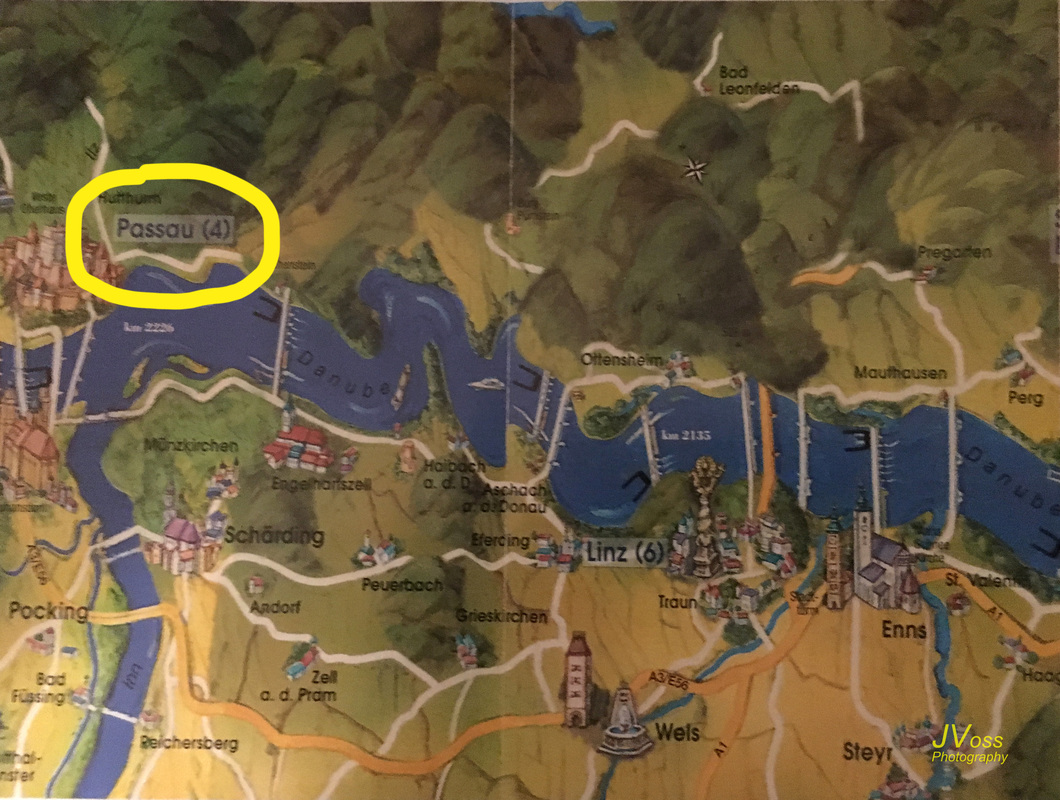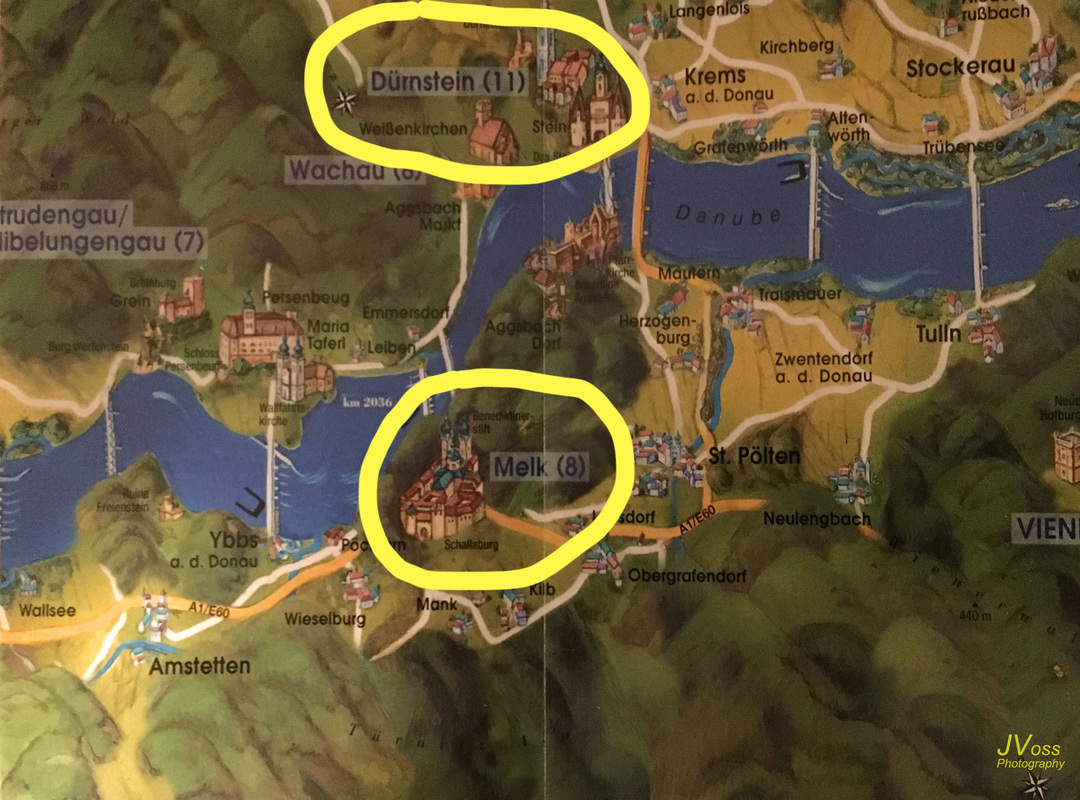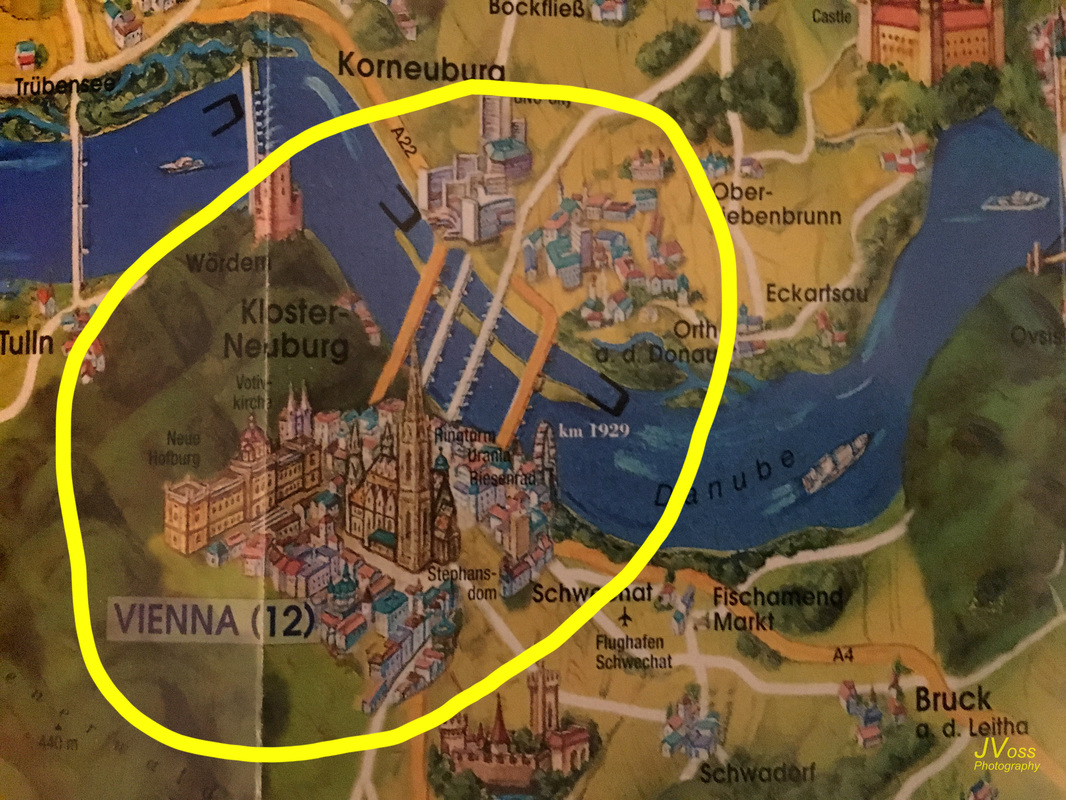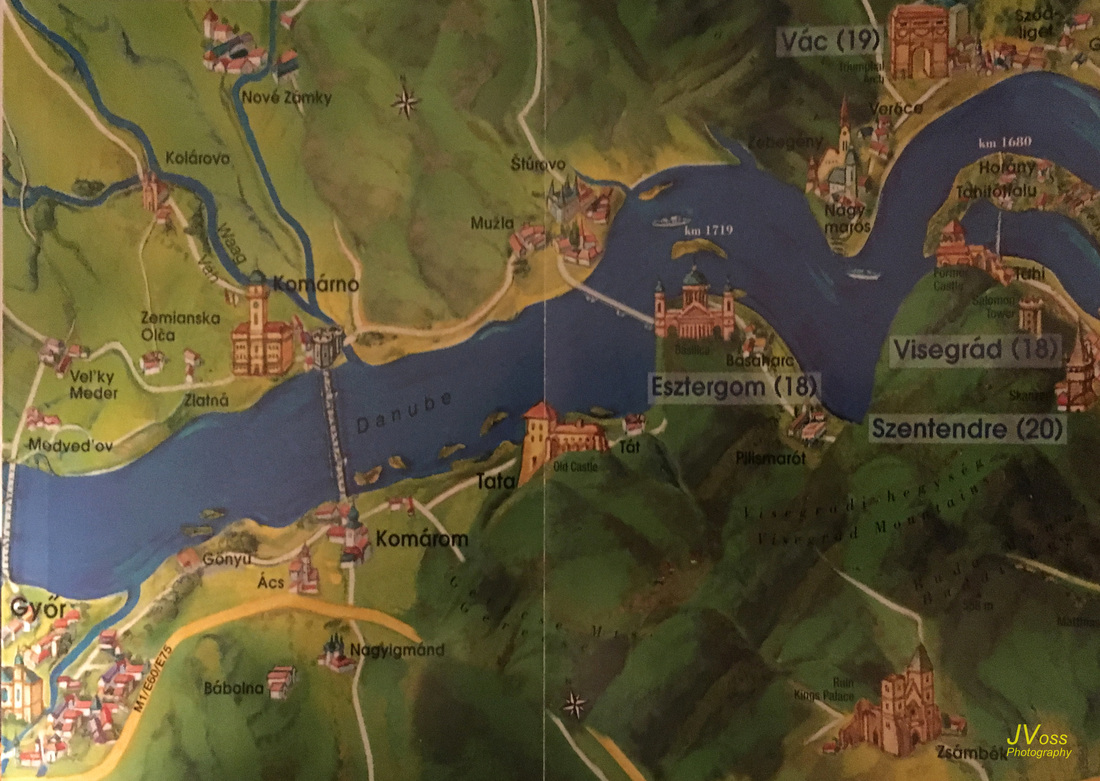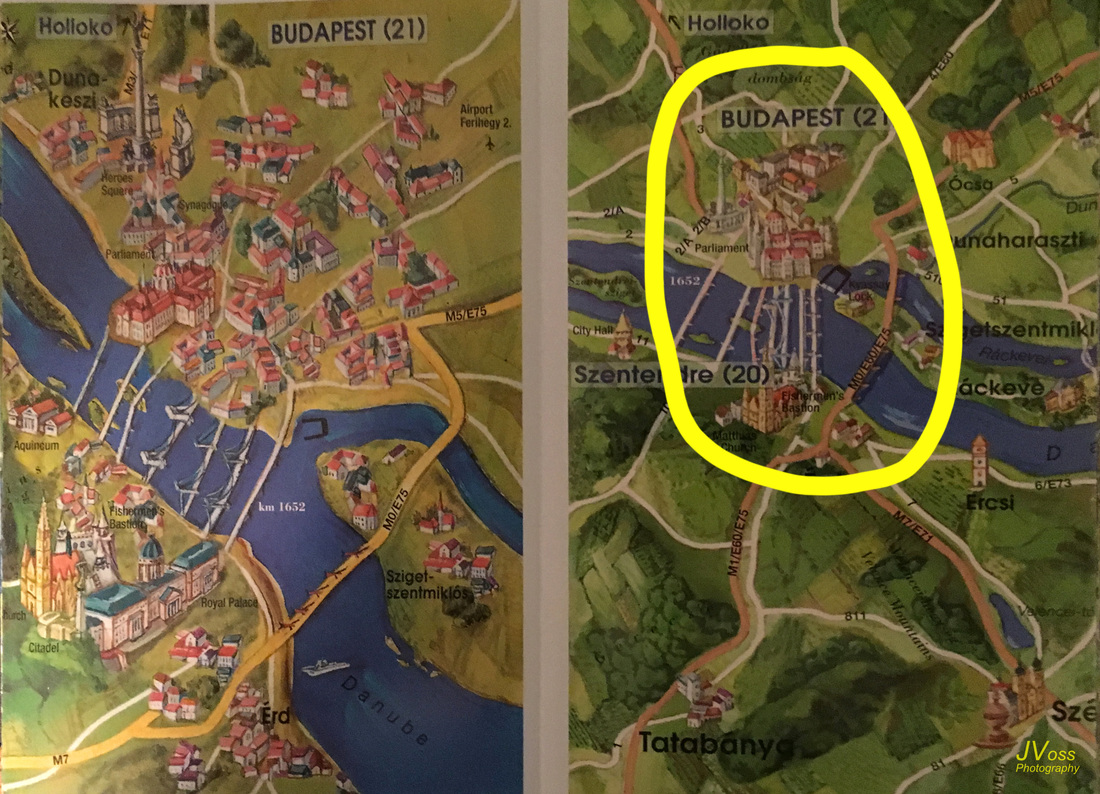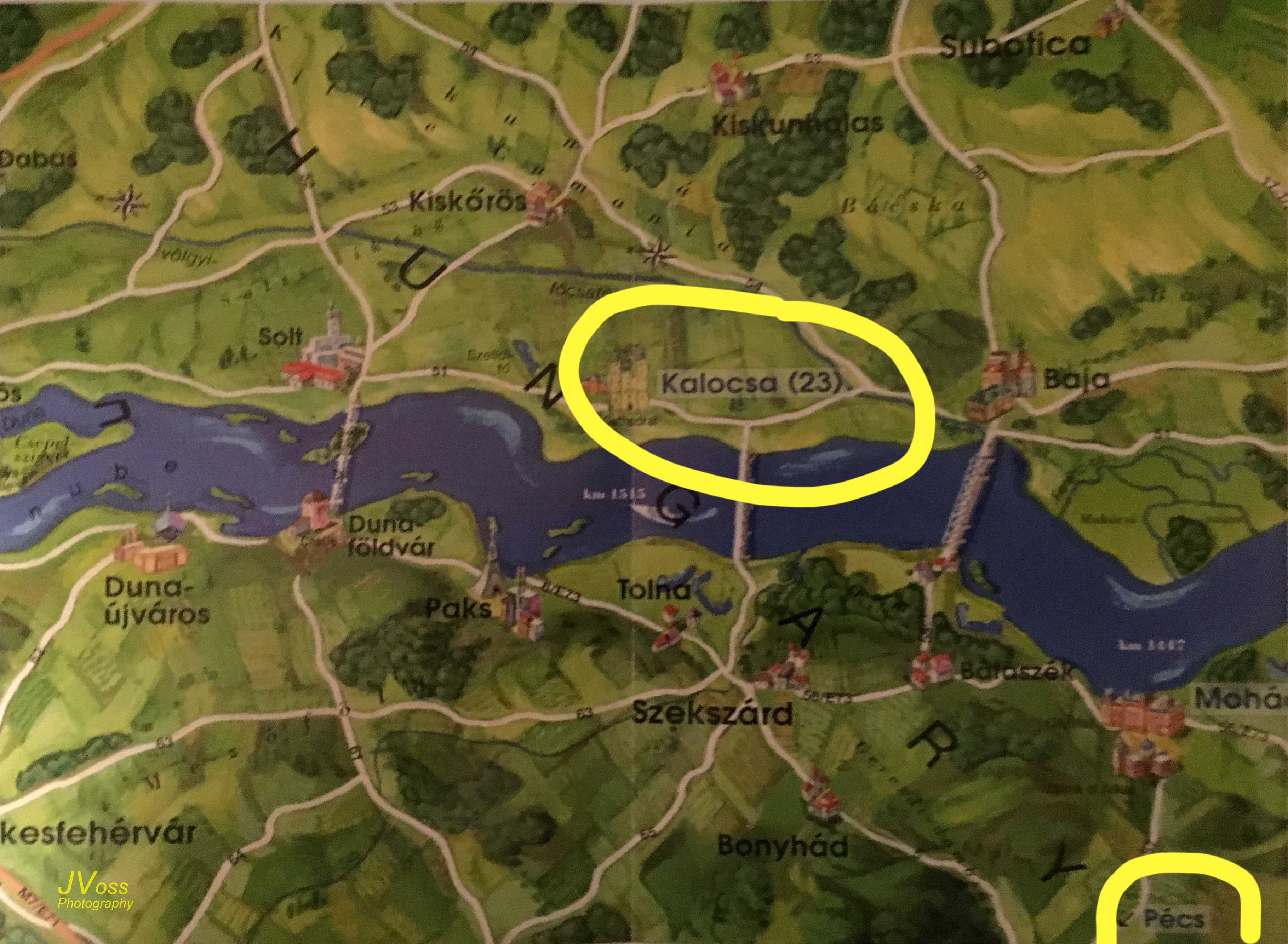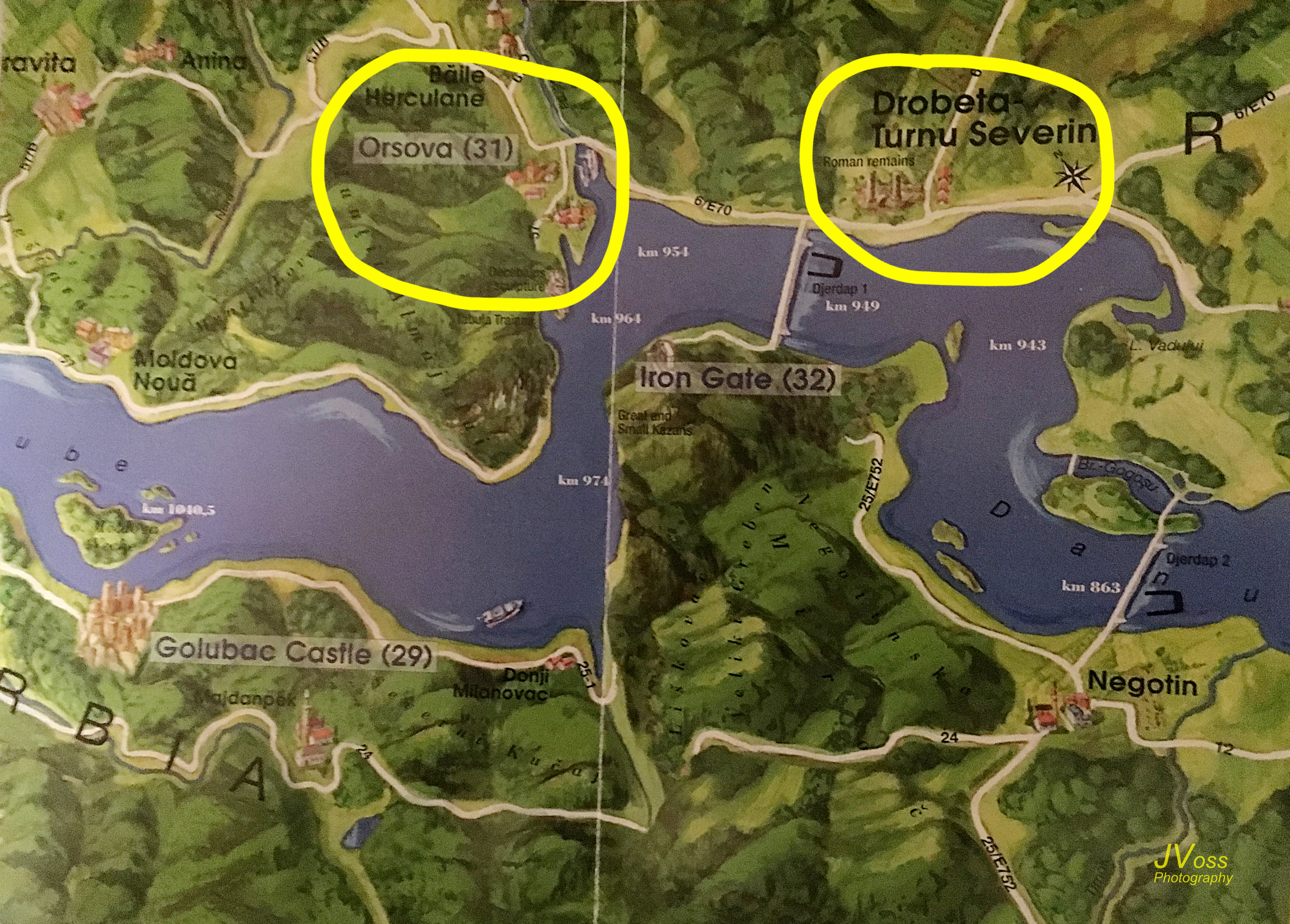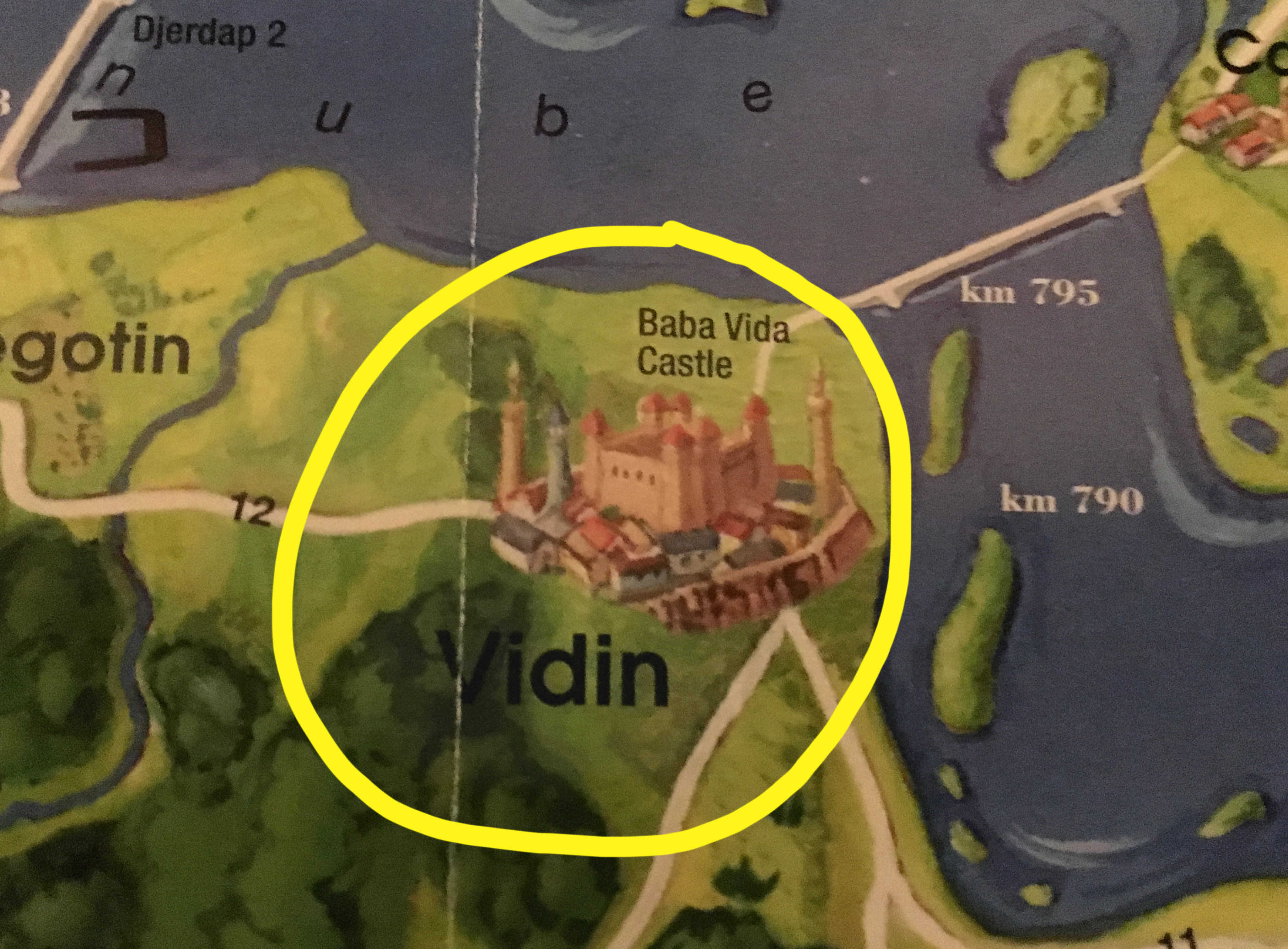
A Visual Reflection on the Danube: Prague to Sofia
I arrived in Prague in the Czech Republic on August 8, 2016, after a tension filled flight from Dublin Ireland. I was detained for a very nerve racking security check in Frankfurt, Germany where I had to switch planes. Forcing myself to keep my mouth shut, I let them examine every bit of my carry on luggage, and my uneasy patience worked. I was approved to move on and just made my flight to Prague. My plan was to spend four days in Prague on my own and then join up with the UW Alumni Tour of Prague and the Danube on the fifth day. I was met by a hotel driver at the airport, driven downtown to the Elysee Hotel located on Wencelaus Square, and by Monday evening was ready to explore.
For the next three days I explored the city on my own, mostly on my feet; but I also learned the exceptional tram system in Prague, which could carry me to just about anywhere I wanted within the city limits. I spent a day at the Prague zoo, rated as one of the top zoos in the world, and took an informative trip to Kutna Hora, a city to the east of Prague that was known in Renaissance times (Around 1400 A.D.) for its silver mines.
My purpose in this travelogue is to tell my story visually with a portfolio of photos and a minimal amount of text. I have a general outline in mind as I start, but it could change and so the posting of this travelogue will also be an adventure. It has taken me three months to get to this point of having selected and processed about 750 photos from a library of over 2000 photos that I shot with my trusty hand sized Olympus SH-2 and occasionally with my iPhone 6s. I am using the slide show format to display the photos. When you press play, you will see the photos in sequence; but you can pause the slide show to examine a particular photo that catches your eye.
Prague on My Own, August 8-12
The photos selected below are from the first four days on my visit to Prague. I took the first day to walk from place to place, but as the day wore on, I began to jump on a Tram. I went the wrong way a couple of times, but by the end of the day, I knew how to navigate the Tram system to my advantage. The second slide show in this section includes photos of residents and tourists in Prague as I caught them with my camera. A good deal of commercial photography is done in Prague for advertising in magazines. I shot my view of what the commercial photographer had staged, but I also took some random photos on the streets of Prague. It is a place where people have fun.
Walking and Traming the City of Prague: August 8-11
I have included a Map of Prague at the beginning of the photo section to give you dome orientation. The Prague Zoo is not on the Map, but it is located on the North side of Prague across the Vltava River.
Note: All Maps except for the Prague Zoo are taken from the AHI Boolket, The Danube to Black Sea River Map.
The Prague Zoo, August 10
I had heard about the great Prague Zoo that sits on the top of a high hill overlooking the city. I decided to spend a good part of Wednesday there. It was a combination of Tram, Bus, and Subway that provided my transportation to the zoo. I have provided photos below with just a few titles. Hopefully, the sequence of the photos tell the story of a zoo with exceptional animals and habitats that safely allow the animals freedom of movement within the boundaries of the zoo.
I had heard about the great Prague Zoo that sits on the top of a high hill overlooking the city. I decided to spend a good part of Wednesday there. It was a combination of Tram, Bus, and Subway that provided my transportation to the zoo. I have provided photos below with just a few titles. Hopefully, the sequence of the photos tell the story of a zoo with exceptional animals and habitats that safely allow the animals freedom of movement within the boundaries of the zoo.
Kutna Hora: August 11
It has always been my practice on the independent part of my trips to sign up for an occasional day tour. I made a reservation on line for a day trip to Kutna Hora, a historical town to the east of Prague that provided much of the silver for the sculpture created in the churches of Prague in Renaissance times. My day started with a trip to the Old Town Square where I would meet our guide under the Astronomical Clock at 9 AM.
It has always been my practice on the independent part of my trips to sign up for an occasional day tour. I made a reservation on line for a day trip to Kutna Hora, a historical town to the east of Prague that provided much of the silver for the sculpture created in the churches of Prague in Renaissance times. My day started with a trip to the Old Town Square where I would meet our guide under the Astronomical Clock at 9 AM.
Seeing Prague with UW Alumni Tour of the Danube: August 12-14
On Friday, August 12, I joined the group that I would spend the next 13 days traveling with on the Danube. The first part of the tour included three additional days in Prague. My new hotel was the Imperial, a beautiful old building fully restored into an exceptional hotel with excellent food every morning and a great place to rest after a long day. The first day was left up to us to see old friends from previous tours and begin to make some new ones. We were free to wander a different section of Prague other than the Wenceslas Square where I spent my first four days. We found our way quite well, including places to eat, walk, and observe. Saturday morning we had a guided tour of the Palace and St. Vitus Cathedral that sit high on the hill overlooking the Vyltava River. Saturday night, my friend Ann and and I joined two new friends to go to the Opera House to hear a beautiful symphony orchestra conducted by multiple directors of various ages and with a troupe of marvelous young singers. For me, it was a preview of future artists, some of whom may become famous one or two decades from now.
Early Sunday morning, I attended Mass at St. Joseph's Church stuck in a nook outside the huge Prague Indoor Mall. Obviously, the church was not torn down to make room for the Mall. The entire service was in Czech. Needless to say it was easy to tune out during the homily, but it was spiritually rewarding to experience the Mass in such a beautiful old Church.
Later Sunday morning, we toured the Old Jewish Quarter in Prague with its historical synagogues and memorial tributes to the many jewish souls who lost their lives in the various concentration camps across Europe during the Holocaust. Sunday night, my friends Ann, Sally ( a late arrival to the tour), Marv (a new friend from Madison) and I went to dinner at a beautiful restaurant that overlooks the river. Night on the Vyltava is filled with various vessels displaying a host of lights. On this night, there were fireworks after dark.
I truly enjoyed my stay in Prague. Seeing it on my own for four days and then in a more structured tour setting for three was the right combination for me. It was a great start to our journey down the Danube, which would begin on Monday.
The Palace, St. Vitus Cathedral, and a River Walk: August 13
On Friday, August 12, I joined the group that I would spend the next 13 days traveling with on the Danube. The first part of the tour included three additional days in Prague. My new hotel was the Imperial, a beautiful old building fully restored into an exceptional hotel with excellent food every morning and a great place to rest after a long day. The first day was left up to us to see old friends from previous tours and begin to make some new ones. We were free to wander a different section of Prague other than the Wenceslas Square where I spent my first four days. We found our way quite well, including places to eat, walk, and observe. Saturday morning we had a guided tour of the Palace and St. Vitus Cathedral that sit high on the hill overlooking the Vyltava River. Saturday night, my friend Ann and and I joined two new friends to go to the Opera House to hear a beautiful symphony orchestra conducted by multiple directors of various ages and with a troupe of marvelous young singers. For me, it was a preview of future artists, some of whom may become famous one or two decades from now.
Early Sunday morning, I attended Mass at St. Joseph's Church stuck in a nook outside the huge Prague Indoor Mall. Obviously, the church was not torn down to make room for the Mall. The entire service was in Czech. Needless to say it was easy to tune out during the homily, but it was spiritually rewarding to experience the Mass in such a beautiful old Church.
Later Sunday morning, we toured the Old Jewish Quarter in Prague with its historical synagogues and memorial tributes to the many jewish souls who lost their lives in the various concentration camps across Europe during the Holocaust. Sunday night, my friends Ann, Sally ( a late arrival to the tour), Marv (a new friend from Madison) and I went to dinner at a beautiful restaurant that overlooks the river. Night on the Vyltava is filled with various vessels displaying a host of lights. On this night, there were fireworks after dark.
I truly enjoyed my stay in Prague. Seeing it on my own for four days and then in a more structured tour setting for three was the right combination for me. It was a great start to our journey down the Danube, which would begin on Monday.
The Palace, St. Vitus Cathedral, and a River Walk: August 13
Walking Tour of Prague, August 14
The Danube River: Boarding the Amadeus Silver in Passau, August 15
On Monday morning after a another delicious breakfast at the Imperial Hotel. We drove southwest in the beautiful Bohemian countryside for several hours and arrived in Passau, Germany around noon. We immediately boarded our river cruiser for lunch, but then spent a good part of the afternoon on a walking tour of Passau. Our guide spoke of the many times the city had been flooded and showed us a record of the flood levels on the building of a wall near the river. We saw more architecture, tourists, and churches during our walk. We then boarded our cruiser for the next nine days on the river. That night we had a reception before dinner and began the process of meeting our fellow travelers. In addition to the University of Wisconsin Alumni group (30), there were several other large alumni groups. UCLA had 40 travelers, Davidson University, 27; and there were a few more smaller alumni groups representing different geographical areas of the U.S. My room was on the A deck and had a great view of the river. I did to have a balcony, but my window could lower for a clear view of the scenery that enchants the shores of the Danube River.
On Monday morning after a another delicious breakfast at the Imperial Hotel. We drove southwest in the beautiful Bohemian countryside for several hours and arrived in Passau, Germany around noon. We immediately boarded our river cruiser for lunch, but then spent a good part of the afternoon on a walking tour of Passau. Our guide spoke of the many times the city had been flooded and showed us a record of the flood levels on the building of a wall near the river. We saw more architecture, tourists, and churches during our walk. We then boarded our cruiser for the next nine days on the river. That night we had a reception before dinner and began the process of meeting our fellow travelers. In addition to the University of Wisconsin Alumni group (30), there were several other large alumni groups. UCLA had 40 travelers, Davidson University, 27; and there were a few more smaller alumni groups representing different geographical areas of the U.S. My room was on the A deck and had a great view of the river. I did to have a balcony, but my window could lower for a clear view of the scenery that enchants the shores of the Danube River.
Stops at Melk and Durnstein, Austria, August 16
The first night on the boat was enjoyable. Dinner with Ann, Sally, and and Marv, and usually some new friends who would join us throughout the trip was a welcome time of the day to review the highlights of the day, eat well prepared food, and drink a bit of wine. Sleeping the first night on the boat was interrupted by frequent entries into the many locks that dot the Danube at this point in the river. You could feel the boat descending, rising, and swaying from side to side. On Tuesday morning after our first scrumptious breakfast and an interesting lecture by our UW Professor in residence, Rudy Kosher, we visited two towns on the Danube in the country of Austria. We took a walking tour of Melk and I was able to spend a little time in the beautiful gardens they have on the grounds of the palace. It should be noted that we could not take photos in many of the palaces we toured, but no one stopped us from shooting the beauty of the surroundings. In the afternoon, we stopped in Durnstein where some of us opted for the 7 km bike ride along the Danube on the east and numerous vineyards on the west. We stopped in a small village before turning around to head back in the boat. We enjoyed some great white wine and cheese. It was a great way to spend the afternoon.
Scenes of the Danube, Melk and Durnstein, Austria
The first night on the boat was enjoyable. Dinner with Ann, Sally, and and Marv, and usually some new friends who would join us throughout the trip was a welcome time of the day to review the highlights of the day, eat well prepared food, and drink a bit of wine. Sleeping the first night on the boat was interrupted by frequent entries into the many locks that dot the Danube at this point in the river. You could feel the boat descending, rising, and swaying from side to side. On Tuesday morning after our first scrumptious breakfast and an interesting lecture by our UW Professor in residence, Rudy Kosher, we visited two towns on the Danube in the country of Austria. We took a walking tour of Melk and I was able to spend a little time in the beautiful gardens they have on the grounds of the palace. It should be noted that we could not take photos in many of the palaces we toured, but no one stopped us from shooting the beauty of the surroundings. In the afternoon, we stopped in Durnstein where some of us opted for the 7 km bike ride along the Danube on the east and numerous vineyards on the west. We stopped in a small village before turning around to head back in the boat. We enjoyed some great white wine and cheese. It was a great way to spend the afternoon.
Scenes of the Danube, Melk and Durnstein, Austria
Vienna, August 17
I am not sure what I was expecting from our one day visit to Vienna, but for some reason it did not excite in the manner that the other stops on the River Cruise did. Our day started with a lecture about Vienna from one of the Guides employed by AHI to conduct our tours. In my judgment, she had a hard time connecting with her audience. I chose to do the excursion called "Imperial Vienna," which included a tour of the Hofburg Palace, followed by a drive through the city to look at various sites. The tour of the Palace was highly structured, very crowded, and we were constantly encouraged to move along by our guide. Somehow, we were 10 minutes behind schedule and we had to catch up. The whole experience was just too rushed. In addition, we were not allowed to take photos inside the Palace, although I did manage to sneak one photo of a chandelier in before I was told to put the camera away. I have very little memory of this visit to the Palace, although there are a few photos of remembrance from the Palace Square. Our driving tour of the city was also less than inspiring. The most memorable part of the visit to Vienna was our stop at the famous Demel's Bakery and Restaurant where we enjoyed a nice sit down lunch with excellent pastry. That night, we were treated after dinner to a demonstration of the famous Vienna Waltz. Even the photo that I attempted of the dancers was a flop. In the final analysis, Vienna was a disappointment for me, perhaps partly due to the personality of our guide, but also because of the rigidity of our planned tours.
I am not sure what I was expecting from our one day visit to Vienna, but for some reason it did not excite in the manner that the other stops on the River Cruise did. Our day started with a lecture about Vienna from one of the Guides employed by AHI to conduct our tours. In my judgment, she had a hard time connecting with her audience. I chose to do the excursion called "Imperial Vienna," which included a tour of the Hofburg Palace, followed by a drive through the city to look at various sites. The tour of the Palace was highly structured, very crowded, and we were constantly encouraged to move along by our guide. Somehow, we were 10 minutes behind schedule and we had to catch up. The whole experience was just too rushed. In addition, we were not allowed to take photos inside the Palace, although I did manage to sneak one photo of a chandelier in before I was told to put the camera away. I have very little memory of this visit to the Palace, although there are a few photos of remembrance from the Palace Square. Our driving tour of the city was also less than inspiring. The most memorable part of the visit to Vienna was our stop at the famous Demel's Bakery and Restaurant where we enjoyed a nice sit down lunch with excellent pastry. That night, we were treated after dinner to a demonstration of the famous Vienna Waltz. Even the photo that I attempted of the dancers was a flop. In the final analysis, Vienna was a disappointment for me, perhaps partly due to the personality of our guide, but also because of the rigidity of our planned tours.
Bratislava, August 18
In constrast to Vienna, Bratislava was a lot of fun. We were able to take a walking tour with a hilarious guide and then spent sometime on our own just wandering around town. Our guide was quite articulate, but also very funny. He made the walking tour quite enjoyable. Like the Czech Republic, Slovakia looks to be doing quite well with transition from Communism to Democracy. The International Auto Industry has chose Bratislava and other parts of Slovakia to construct factories. Many world famous cars are produced in this country giving the country a growing economy and a sense of optimism about the future. This was the Classical Music tour option and our walking tour ended with a visit to the Opera House where a docent gave us a history and tour of the impressive structure. I was able to get some photos of Slovakians and tourists just walking the street. The language in the Czech Republic and Slovakia is almost identical, however, the Czech Republic is largely Catholic while Slovakia is mostly Protestant. There is a strong relationship between the two countries. Bratislava, after a short visit, appeared to be a vibrant and happy place.
In constrast to Vienna, Bratislava was a lot of fun. We were able to take a walking tour with a hilarious guide and then spent sometime on our own just wandering around town. Our guide was quite articulate, but also very funny. He made the walking tour quite enjoyable. Like the Czech Republic, Slovakia looks to be doing quite well with transition from Communism to Democracy. The International Auto Industry has chose Bratislava and other parts of Slovakia to construct factories. Many world famous cars are produced in this country giving the country a growing economy and a sense of optimism about the future. This was the Classical Music tour option and our walking tour ended with a visit to the Opera House where a docent gave us a history and tour of the impressive structure. I was able to get some photos of Slovakians and tourists just walking the street. The language in the Czech Republic and Slovakia is almost identical, however, the Czech Republic is largely Catholic while Slovakia is mostly Protestant. There is a strong relationship between the two countries. Bratislava, after a short visit, appeared to be a vibrant and happy place.
Budapest, August 19: Two Cities as One
It was one of the longer journeys on the river from Bratislava to Budapest as the maps above present. Entering Budapest from the north on an early Friday morning, you see the ornate Parliament Building on the left in the part of the city known as Pest and the Castle (Palace) high on the hill to the right, known as Buda. Leaving that night was even more impressive as the buildings lit up the skyline in a light show of great passion for a city in a country that is struggling with the transition from socialism to democratic capitalism. In between, my camera caught many great sites, scenes, and people. As much as I was lamenting our visit to Vienna, I found the day we spent in this historic city to be exceptional and right up there with Prague as a city of beauty. There was a great deal of construction going on at the Castle that sits high above the Danube, but it did not stop the holiday festivals and the combination of locals and tourists mixing together in this historical European capital city. We did a lot of walking in the morning and returned to the ship for lunch. I recall taking a brief nap before making a visit to the indoor market a couple of blocks away. The architecture in Budapest is remarkable and the views from the Castle on the hill magnificent. I have a very poor photo of a person walking on the frame of a bridge. This was a common scene as we passed below the bridges leaving the city. When we we left after dark, the light show was amazing, highlighting the beauty of Budapest.
It was one of the longer journeys on the river from Bratislava to Budapest as the maps above present. Entering Budapest from the north on an early Friday morning, you see the ornate Parliament Building on the left in the part of the city known as Pest and the Castle (Palace) high on the hill to the right, known as Buda. Leaving that night was even more impressive as the buildings lit up the skyline in a light show of great passion for a city in a country that is struggling with the transition from socialism to democratic capitalism. In between, my camera caught many great sites, scenes, and people. As much as I was lamenting our visit to Vienna, I found the day we spent in this historic city to be exceptional and right up there with Prague as a city of beauty. There was a great deal of construction going on at the Castle that sits high above the Danube, but it did not stop the holiday festivals and the combination of locals and tourists mixing together in this historical European capital city. We did a lot of walking in the morning and returned to the ship for lunch. I recall taking a brief nap before making a visit to the indoor market a couple of blocks away. The architecture in Budapest is remarkable and the views from the Castle on the hill magnificent. I have a very poor photo of a person walking on the frame of a bridge. This was a common scene as we passed below the bridges leaving the city. When we we left after dark, the light show was amazing, highlighting the beauty of Budapest.
Kolocsa and Pecs, August 20
Our next stop was in a rural section of Hungary as the Danube continues its southeastern journey to the Black Sea. Hungary is not doing as well as the Czech Republic and Slovakia. There is mistrust in the government and the economy, although not the poorest in Europe, is struggling. Once docked, we took a morning to drive into the Hungarian countryside to the town of Pecs. We toured churches and walked the city. There was a festival going on and people were enjoying the gardens and parks in the city. I remember having a gelato while sitting alone on a bench watching the locals and tourists walk by. This was a quieter town than the large capital cities we had already visited. I took some of the most interesting photos of people on this trip, particularly in the park that bordered the restaurant where we ate lunch. There were 130 plus cruise travelers that went on this trip to Pecs. We all had lunch together at a very long table in a local restaurant. The roast duck was melt in your mouth good and washed down easily with the excellent wine. I thoroughly enjoyed our little visits to smaller areas that border or are in short driving vicinity of the Danube. This would not be the last bus excursion, but it was one of the best little trips we took on the cruise down the Danube.
Our next stop was in a rural section of Hungary as the Danube continues its southeastern journey to the Black Sea. Hungary is not doing as well as the Czech Republic and Slovakia. There is mistrust in the government and the economy, although not the poorest in Europe, is struggling. Once docked, we took a morning to drive into the Hungarian countryside to the town of Pecs. We toured churches and walked the city. There was a festival going on and people were enjoying the gardens and parks in the city. I remember having a gelato while sitting alone on a bench watching the locals and tourists walk by. This was a quieter town than the large capital cities we had already visited. I took some of the most interesting photos of people on this trip, particularly in the park that bordered the restaurant where we ate lunch. There were 130 plus cruise travelers that went on this trip to Pecs. We all had lunch together at a very long table in a local restaurant. The roast duck was melt in your mouth good and washed down easily with the excellent wine. I thoroughly enjoyed our little visits to smaller areas that border or are in short driving vicinity of the Danube. This would not be the last bus excursion, but it was one of the best little trips we took on the cruise down the Danube.
Belgrade, Serbia, August 21
Many trips that I see online do not go beyond Budapest on the journey down the Danube, but this trip did continue on for another 3 days on the river. It appeared to me based on the comments of the guides that Serbia and more specifically, Belgrade, were struggling as one of the new democratic governments. Like Hungary, the country was poor. It has applied to the European Union, but still is not a full member of this economic union because it has not yet met certain objectives laid out by the EU. Serbia and Belgrade have been under the control of many different invading forces over the centuries. Now is the time, when many Serbians see the opportunity to become independent with a native identity. Our guide believed that it would take another generation at least to fully make the transition from socialism to democratic capitalism. Our guide was quite optimistic about the future, though he spoke of the corruption at the highest levels of government and the struggle of the people to find good jobs and security in their future.
The main tour for the morning was a short bus ride through Belgrade to the old garrison that sits on top of a hill overlooking the two rivers that flow through Belgrade, the Danube and the Sava. Many times over the years, the multiple invading forces had to confront the garrison. We were docked on the Sava but from high on the hill you could see how the two rivers join together. In the afternoon, we were free to wander the city. There were several scheduled shuttle services in the PM to take us to and from the Amadeus Silver.
The transition from a Muslum country to an Orthodox Christian country is reflected in the decades long repair effort in the now named Cathedral of St. Sava. People come there for religious ceremonies and worship despite the disarray.
When we returned to the boat for our evening meal, we were provided with exquisite desserts that preceded a marvelous Serbian Folk Dancing group on the the top deck. My photos of the dancing are horrible, but at least you get the idea of the enthusiasm and excitement of the music and the dancing. Belgrade, like Prague and Budapest has its own light show at night. Next stop Romania.
Many trips that I see online do not go beyond Budapest on the journey down the Danube, but this trip did continue on for another 3 days on the river. It appeared to me based on the comments of the guides that Serbia and more specifically, Belgrade, were struggling as one of the new democratic governments. Like Hungary, the country was poor. It has applied to the European Union, but still is not a full member of this economic union because it has not yet met certain objectives laid out by the EU. Serbia and Belgrade have been under the control of many different invading forces over the centuries. Now is the time, when many Serbians see the opportunity to become independent with a native identity. Our guide believed that it would take another generation at least to fully make the transition from socialism to democratic capitalism. Our guide was quite optimistic about the future, though he spoke of the corruption at the highest levels of government and the struggle of the people to find good jobs and security in their future.
The main tour for the morning was a short bus ride through Belgrade to the old garrison that sits on top of a hill overlooking the two rivers that flow through Belgrade, the Danube and the Sava. Many times over the years, the multiple invading forces had to confront the garrison. We were docked on the Sava but from high on the hill you could see how the two rivers join together. In the afternoon, we were free to wander the city. There were several scheduled shuttle services in the PM to take us to and from the Amadeus Silver.
The transition from a Muslum country to an Orthodox Christian country is reflected in the decades long repair effort in the now named Cathedral of St. Sava. People come there for religious ceremonies and worship despite the disarray.
When we returned to the boat for our evening meal, we were provided with exquisite desserts that preceded a marvelous Serbian Folk Dancing group on the the top deck. My photos of the dancing are horrible, but at least you get the idea of the enthusiasm and excitement of the music and the dancing. Belgrade, like Prague and Budapest has its own light show at night. Next stop Romania.
The Iron Gate, Drobeta, Turnu, Severin, and Osorvo, Romania, August 22
For me, this was the most dramatic part of the Danube. Sailing through the Kazan Gorge toward the famous and controversial Dam and Locks known as the Iron Gate was exceptionally beautiful, particularly in the early morning. The locks and the dam were constructed between 1962 and 1972 to ensure that the water level was high enough for boats to safely pass through the Gorge. It was a controversial project not only for environmental reasons, but also because two islands were sunk and the people were relocated. The name of one of the islands was Orsovo. A new village of Orsovo was constructed several miles to the west on the shore of the Danube. We docked at the tri-villages of Drobeto, Turnu, and Severin for our bus trip to the relocated town of Orsovo.
Because of the relocation, a deal was struck by the residents of Orsovo with the Communist government to construct a Catholic Cathedral (1972-76) in the contemporary architectural style of many churches that were built after the Vatican Council in Rome in the 60s. as a peace offering for sinking the island and relocating the people. This continues to be the highlight for tourists that visit Orsovo. The art work of the Stations of the Cross is so contemporary that many visitors find it a stark contrast to the all of the ancient churches visited in other cities on the Danube. Interestingly enough, you can find likenesses of Lenin, John Lennon, Nadia Commenich, etc depicted in the crowds that followed the Passion of Christ. Today it holds services in four different languages. We listened to a brief organ concert on our visit. It was all very interesting to say the least.
We returned to the boat for the farewell dinner during the river cruise phase of our trip. We thanked all of the staff for their service, food preparation, and kindnesses on the trip. The next day we disembarked in Vidin, a river town in Bulgaria.
For me, this was the most dramatic part of the Danube. Sailing through the Kazan Gorge toward the famous and controversial Dam and Locks known as the Iron Gate was exceptionally beautiful, particularly in the early morning. The locks and the dam were constructed between 1962 and 1972 to ensure that the water level was high enough for boats to safely pass through the Gorge. It was a controversial project not only for environmental reasons, but also because two islands were sunk and the people were relocated. The name of one of the islands was Orsovo. A new village of Orsovo was constructed several miles to the west on the shore of the Danube. We docked at the tri-villages of Drobeto, Turnu, and Severin for our bus trip to the relocated town of Orsovo.
Because of the relocation, a deal was struck by the residents of Orsovo with the Communist government to construct a Catholic Cathedral (1972-76) in the contemporary architectural style of many churches that were built after the Vatican Council in Rome in the 60s. as a peace offering for sinking the island and relocating the people. This continues to be the highlight for tourists that visit Orsovo. The art work of the Stations of the Cross is so contemporary that many visitors find it a stark contrast to the all of the ancient churches visited in other cities on the Danube. Interestingly enough, you can find likenesses of Lenin, John Lennon, Nadia Commenich, etc depicted in the crowds that followed the Passion of Christ. Today it holds services in four different languages. We listened to a brief organ concert on our visit. It was all very interesting to say the least.
We returned to the boat for the farewell dinner during the river cruise phase of our trip. We thanked all of the staff for their service, food preparation, and kindnesses on the trip. The next day we disembarked in Vidin, a river town in Bulgaria.
Disembarking in Vidin, Bulgaria and Travel to Sofia, August 23
It was a rainy morning in Vidin, Bulgaria when we left the Amadeus Silver for the last time. We spent the next couple of hours on a walking tour of Vidin, including the Castle Baba Vida that borders the Danube River. We then boarded our bus for the three hour trip to Sofia, the Capital of Bulgaria. The trip through the mountainous Bulgarian countryside was beautiful with plenty of winding roads and hills and valleys. Along the way we stopped for lunch with some magnificent outcroppings and cliffs. We arrived in Sofia later in the afternoon and settled into our lovely hotel right in the downtown area. My window looked out over an archeological dig of ruins that presumably date back to the area of Constantine. That night Ann, Sally, Marv, and I ate delicious Bulgarian food at a local restaurant. Although Bulgaria is known as the poorest country in the European Union, it has a strong sense of history and culture, despite how much of its history has been under foreign domination. Our guide for most of our stay in Sofia was interesting because she had many reservations about the transition from socialism to democratic capitalism. Corruption at the top levels of government and the lack of social programs to provide a safety net to the well being of the people appears to a major concern in Bulgaria. With that said, I really enjoyed our stay in Sofia.
It was a rainy morning in Vidin, Bulgaria when we left the Amadeus Silver for the last time. We spent the next couple of hours on a walking tour of Vidin, including the Castle Baba Vida that borders the Danube River. We then boarded our bus for the three hour trip to Sofia, the Capital of Bulgaria. The trip through the mountainous Bulgarian countryside was beautiful with plenty of winding roads and hills and valleys. Along the way we stopped for lunch with some magnificent outcroppings and cliffs. We arrived in Sofia later in the afternoon and settled into our lovely hotel right in the downtown area. My window looked out over an archeological dig of ruins that presumably date back to the area of Constantine. That night Ann, Sally, Marv, and I ate delicious Bulgarian food at a local restaurant. Although Bulgaria is known as the poorest country in the European Union, it has a strong sense of history and culture, despite how much of its history has been under foreign domination. Our guide for most of our stay in Sofia was interesting because she had many reservations about the transition from socialism to democratic capitalism. Corruption at the top levels of government and the lack of social programs to provide a safety net to the well being of the people appears to a major concern in Bulgaria. With that said, I really enjoyed our stay in Sofia.
Sofia, the Last Day of the Trip, August 24
Sofia, though economically suffering, is a vibrant city from a tourist's perspective. We enjoyed touring the city during the day and then meeting at a beautiful mountaintop restaurant where we enjoyed the Bulgarian culture of food, music and dancing, and fire walking. It was a great celebration of our trip. I will let the photos tell the story.
Sofia, though economically suffering, is a vibrant city from a tourist's perspective. We enjoyed touring the city during the day and then meeting at a beautiful mountaintop restaurant where we enjoyed the Bulgarian culture of food, music and dancing, and fire walking. It was a great celebration of our trip. I will let the photos tell the story.

